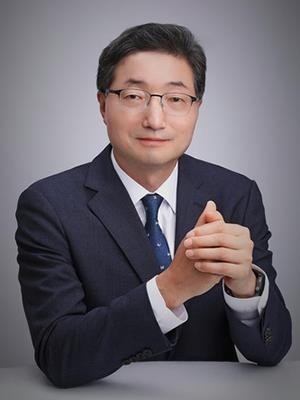
Current Concerns and Preparing for Tomorrow
Amid forecasts that the won-dollar exchange rate could surpass 1,500 won, market unease continues to linger. Last week, the dollar-won rate surged rapidly to the 1,470-won range before plunging more than 20 won, underscoring heightened market anxiety. Self-proclaimed experts with limited market experience are fueling these concerns. While the won’s weakness clearly reflects a series of negative developments in the South Korean economy, labeling the situation a crisis is excessive.
Examining the structure of the won’s depreciation reveals a scenario markedly different from the 1997 Asian financial crisis or the 2008 global financial crisis. Unlike those periods, South Korea is not facing a shortage of foreign currency liquidity. The primary driver of the current won weakness is increased overseas investment by institutional and retail investors. There are no signs of crisis such as a surge in short-term foreign currency borrowing or a widening maturity mismatch. The current high exchange rate is not a manifestation of liquidity risk, but rather the result of portfolio adjustments.
Recent market jitters stem from concerns that demand for dollars may rise further. It is true that the scale of promised investments in the United States, made in response to unilateral U.S. government requests, is burdensome. However, these investments will be executed over a long period. The foreign exchange market will undergo significant changes over the next decade. It is important to consider not only upward but also downward factors for the exchange rate.
The direction of the exchange rate could shift. Many expect the U.S. dollar to have reached its medium- to long-term peak. The structural factors behind the won’s weakness are also likely to dissipate. Over the past decade, South Korea’s external investment outpaced inflows due to increased pension savings, but as the pension payment structure changes around 2030, the momentum for a weaker won will quickly fade. As net external investment and the current account surplus decline, structural factors supporting a stronger won will emerge.
Assuming this medium- to long-term scenario, two points warrant attention.
First is the risk of exchange rate overshooting. As seen in the recent surge, exchange rates can deviate sharply from equilibrium due to psychological factors and economic adjustments. Currently, the dollar-won rate is showing a rapid weakening, diverging from the trend of the U.S. dollar index (DXY). When the direction of savings and investment shifts and dollar volatility increases, the dollar-won rate could enter a significant downward phase. Notably, in recent months, the won has moved almost in tandem with the yen, weakening at a similar pace. The high volatility of the yen should also be considered.
Second, when such inflection points occur, the mechanisms for latent crises may reemerge. If expectations for a stronger won take hold, a surge in forward dollar selling, as seen during the early 2000s period of dollar weakness, could occur. If forward dollar selling expands while the current account surplus shrinks, banks’ hedging activities could lead to increased short-term foreign currency borrowing, heightening the risk of foreign currency liquidity imbalances.
Following the introduction of a free-floating exchange rate system after the Asian financial crisis, South Korea’s economy was exposed to high exchange rate volatility without adequate preparation. In this new environment, corporations and financial institutions responded through forward and FX swap transactions. However, in the absence of counterparties or mechanisms to absorb opposite positions, these instruments converted exchange rate risk into liquidity risk, masking underlying vulnerabilities. The surge in forward dollar selling and increased short-term bank borrowing during the period of won strength after 2001 set the stage for the crisis South Korea faced in 2008.
The risk to be concerned about now is not the rise in the exchange rate, but the risks created by exchange rate volatility in the next cycle. The mechanisms for such crises still exist. While macroprudential measures such as forward transaction regulations have been established, these alone may not sufficiently mitigate the volatility risks facing the market. What is needed is enhanced market shock absorption capacity, and several tasks should be considered to achieve this.
Above all, the market base must be broadened to absorb and disperse concentrated hedging transactions. Liquidity in the forward and derivatives markets should be increased, and offshore investors’ access to the won should be expanded to diversify risk. Financial institutions should diversify and lengthen the maturity of their foreign currency funding structures to reduce reliance on short-term borrowing, and efforts should be made to internationalize the won, thereby distributing currency risk to foreign investors.
Such structural improvements in the foreign exchange market are closely linked to the government’s ongoing capital market innovation initiatives. In an open economy, the capital and foreign exchange markets are inseparable. Without parallel innovation in the FX market, capital market reforms will be constrained and increasingly vulnerable to volatility shocks. Balanced reforms in both sectors are essential to build a structure resilient to future exchange rate fluctuations. Policy and institutional changes take time. Rather than worrying about today, it is more important to prepare for tomorrow.
(Lee Seung-heon, Professor at Soongsil University / Former Deputy Governor of the Bank of Korea)
(End)
Copyright © Yonhap Infomax Unauthorized reproduction and redistribution prohibited.

